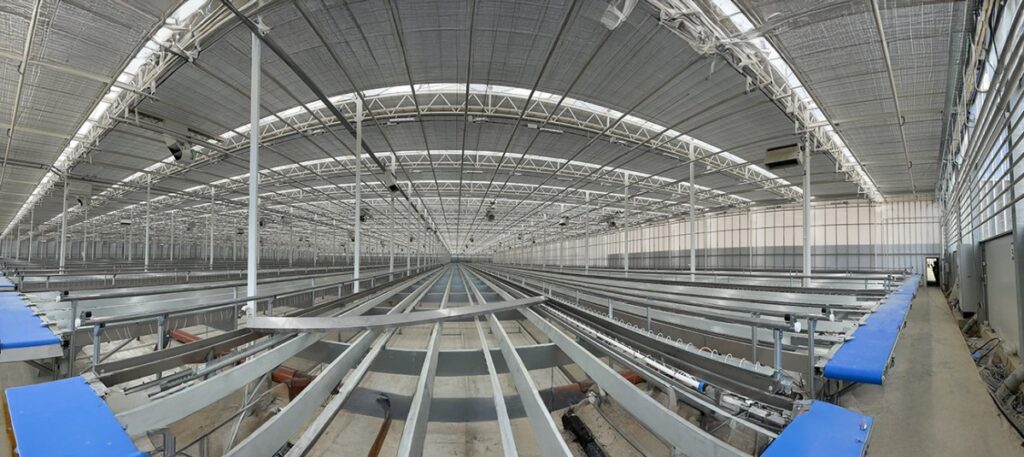Crucible Moments Preserve Exposing the Harsh Truths In regards to the Managed Surroundings Agriculture Business – City Ag Information

Final yr challenged the business horticulture and managed setting agriculture (CEA) business in virtually each manner potential. Whether or not greenhouse, vertical or indoor manufacturing of recent produce, or different specialty crops, 2024 erased the thrill round new applied sciences that had been supposed to vary the way in which we devour and domesticate recent produce.
As you learn, bear in mind what a crucible second is:
A crucible second is a difficult state of affairs or expertise that forces you to confront your character, values, and id, resulting in a transformative change or a pivotal choice that shapes your future trajectory; basically, a second of intense adversity the place one’s true nature is revealed and examined, doubtlessly main to private or skilled development and improvement.
The yr was basically a reset — one other crucible second for the business. The whole lot we noticed in 2024 appears to point we’re going again to the way in which issues had been 5-10 years in the past.
- Investor-led and backed start-up firms are disappearing.
- A handful of the biggest firms once more management the managed setting agriculture business.
- We’re again to excessive quantity and low margins agriculture enterprise philosophy.
- Progress within the complete manufacturing space is stagnant. Focus is on consolidation.
- Regionally grown and sustainable is not a part of the main discussions.
So what does all this imply?
We should do not forget that rising crops in managed environments utilizing hydroponic know-how and supplemental lighting isn’t new. As I shared on City Ag Information many occasions, this business is at least 40 years outdated in america. The U.S. represents one of many smallest acres of manufacturing space in North America, in addition to in a lot of the developed world.
“Going again to the way in which issues had been” merely implies that we now have reverted again to the place we had been earlier than all of the vertical farming and ag-tech hype began. We’re counting on just a few dominant gamers to manage the business’s future, whereas different hyper-niche operators do enterprise in markets too small for the massive firms to compete.
Going again additionally means we now have fewer decisions in know-how, as the normal firms appear to have been profitable in defending their ivory towers. Moreover, going again implies that in addition to much less competitors, there’s now much less drive for innovation because the return on funding was not there.
Is that this all unhealthy? By no means — it by no means is.
The one manner that is all unhealthy is that if we cease combating for enhancements in our business that enable shoppers decisions, at an inexpensive worth, produced in a fashion that mirrors their cultural, dietary, moral and budgetary wants.
So what ought to we study from 2024? What ought to we take into 2025?
Make on daily basis the identical.
Profitable horticulture and agriculture companies are seldom thrilling. It’s a tragic however true reality. (I might make the identical argument for a lot of industries which were round so long as agriculture.) Success in our business is concerning the capability to excel in monotony.
As farmers, we’re in a high-volume, low-margin enterprise, and our capability to be worthwhile is determined by being constant on daily basis. And the drive to consistency is the place ag-tech actually suits in. Whether or not that consistency is utilizing complement mild from LED develop lights to maintain mild ranges uniform sufficient to drive manufacturing. Or utilizing sensors to gather information so growers can higher claw again these small percentages of loss. Or utilizing AI and machine studying to assist handle price.
Expertise in our business can’t be seen as revolutionary as a lot correctly considered as insurance coverage. The flexibility to make sure that on daily basis is as near the identical as we are able to afford to make it.
Spend and make investments like farmers.
Traditionally, there’s a fixation on price up and down the provision chain in agriculture and business greenhouse horticulture (and it looks as if it could at all times be this manner). The final 5-10 years in CEA modified this. For a time period, we tried investing like tech firms (which is sensible as a result of the change was led by tech-trained traders.) This will likely show to be considered one of our most expensive errors, as investor-backed firms did not carry out and business veterans and critics at the moment are ready to say, “I informed you so.”
It’s essential to do not forget that all of us contribute not directly to promoting recent produce. It’s additionally essential to acknowledge that whereas the costs on the grocery retailer went up, this doesn’t at all times imply the value to the farm went up equally or in any respect. We will talk about why in a unique article, however for now it doesn’t matter as a result of that is one thing we can not instantly change.
For now you will need to understand that we’re in a cycle the place “farms” have to see worth of their funding. Producers additionally should perceive that a lot of their know-how investments must be seen equally. What units the know-how aside is the business expertise a producer shares with the farm and the flexibility of the know-how to reliably enhance yields or lower operational price in an economical method. It would simply be this straightforward.
What received’t result in success is farms bearing the complete weight of both launching a know-how or educating know-how firms how one can design and use their merchandise, just for these firms to capitalize on the data gained. Too usually, these firms flip round and promote to new clients who find yourself competing straight with the farms that helped them vet and enhance the unique ideas.
To be the change makers we as soon as hoped to be, we should discover ways to spend money on know-how that sustainably grows our business. On the identical time, we should perceive that our business wants to vary and solely working with the bottom price producers or suppliers won’t get us there.
Somebody new should lead the dialogue going ahead.
Now that the primary tech wave crashed, who will as soon as once more excite our business? Who will encourage new blood to return in? If we nonetheless want “traders” (which most imagine we do), who will persuade traders that our business remains to be worthy?
As an individual who has made tons of associates on this business, this is perhaps my greatest concern. Up to now yr, three of my closest associates left the business or are planning to go away.
The explanations? They range by individual, however all of them come all the way down to the identical points:
1. An absence of alternative, whether or not monetary or social.
2. A realization that this business is difficult. It additionally doesn’t pay properly (particularly when thought of on an hourly foundation).
3. A realization that the perceived alternatives to vary the world or the neighborhood will likely be a sluggish grind — the place gratification received’t at all times be instant, measurable in {dollars}, or straightforward to see or expertise.
These are all individuals who didn’t enter the business for fast earnings or private achieve. That they had a real need to make a distinction.
If we don’t discover a method to maintain expertise within the business, we all know what is going to occur. A handful of huge firms will management the whole lot we eat. Nothing will change. (One can simply argue that that is the place we discover ourselves at present.)
But if we nonetheless imagine in what motivated us initially, then now isn’t the time to stop. We should consider the errors we made, settle for the info, and shortly create new plans and alter.
However this results in the query, who actually desires new leaders? If we take a look at the businesses presently doing properly, it seems they don’t seem to be involved with being leaders. And why ought to they? They appear to be involved with turning a revenue. Which, in spite of everything, is the rationale companies exist (to return a revenue to the shareholders or to the proprietor), proper?
We seldom see management from these firms at business tradeshows, on podcasts or on panels. Once we do, they’re busy engaged on operations or supporting their clients that buy giant volumes of produce.
Which leaves us with a handful of questions…
Why are they main? What do we would like our leaders to do? Who’re they main? Why are they main? What are they main? What can we anticipate the result to be?
Now’s the time to give attention to what we realized and the truths we are able to depend on.
We all know the story of an area, sustainable farm resonates all through the provision chain. We now can verify a phase of shoppers values recent, domestically grown produce — and when shoppers demand it, retailers observe. We’ve seen proof of this as folks constantly vote with their wallets.
We additionally know folks wish to imagine in tales of alternative and neighborhood. Once more, the proof is obvious: When firms went public, folks invested in these beliefs.
However at its core, that is nonetheless farming. Irrespective of the crop — whether or not tomatoes, peppers, cucumbers, strawberries, leafy greens, culinary herbs, ornamentals, or hashish — each farm and each enterprise supporting farms have to be grounded within the present market realities of these crops’ financial worth.
That is the story we have to get higher at telling as a result of it displays the business’s actuality. And people are the companies we have to get higher at working.






